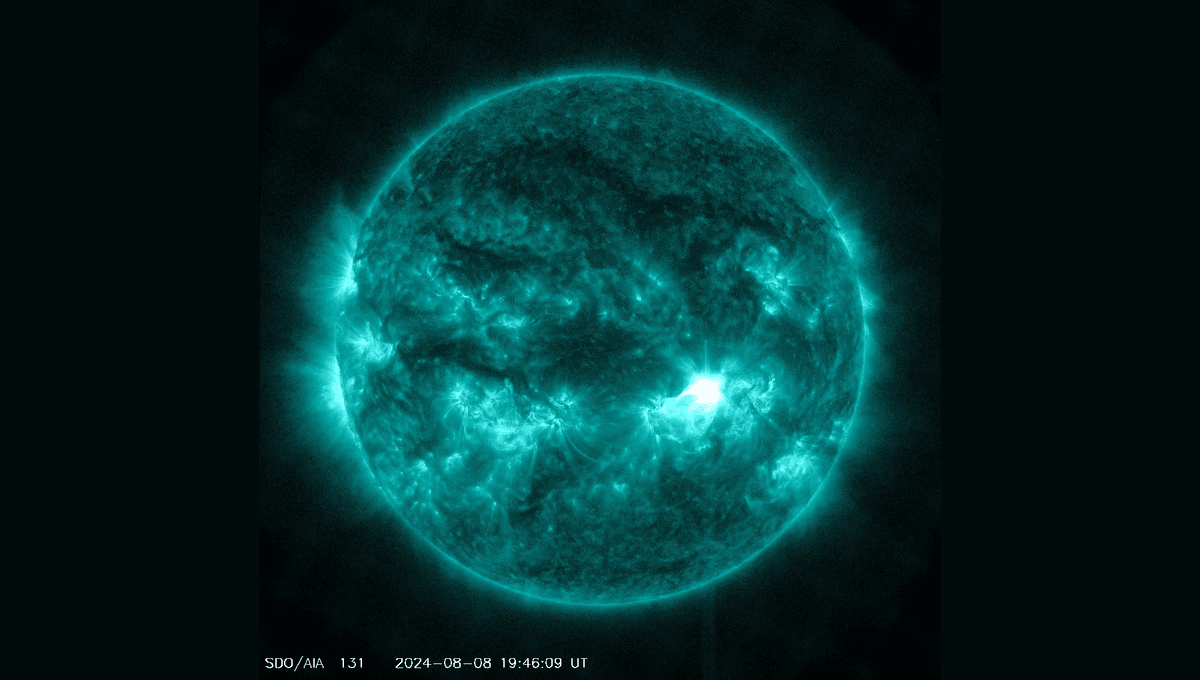
Solar flares are dramatic releases of energy from the Sun. They are associated with sunspots and their magnetic fields, and when the Sun is at its most active during its 11-year-long cycle, we get a lot of them at high energy. The emission of powerful solar flares can create radio blackouts and damage satellites and living organisms. Luckily, our atmosphere and magnetic field keep us safe.
Stars too have flares, and researchers over the last decade or so have found evidence that some of these flares can be up to hundreds of times more energetic than what has been recorded from the Sun. The obvious question is, if it’s happening elsewhere in the galaxy, can it also happen to the Sun? The answer is a strong maybe.
NASA’s planet-hunting telescope Kepler has observed many tens of thousands of stars, precisely measuring their brightness. Professor Kazunari Shibata from Kyoto University and his team were interested in seeing if they could spot changes in brightness from some of these stars. A bright flare from the Sun would increase its luminosity by maybe a fraction of a percent – but the flares from these objects were making the stars up to 1.5 percent.
Members of the team did not originally believe such flares were possible. Theoretical considerations said yes, but observations up to about the early 2010s did not. Those team members set out to disprove the findings but without success.
I encourage many theorists to really study whether this is correct or not.
Professor Kazunari Shibata
“Doctor Maehara was a postdoc of my group and he didn’t believe in such superflares from Sun-like stars,” laughs Professor Shibata as he told us about the beginning of the work. “He was very careful and a very strict analyzer. He tried to reject all the discoveries but some of them remained. They couldn’t be rejected.”
More recently, the team has measured what they believe to be coronal mass ejections and filaments from Sun-like stars, also in the context of events that are more powerful than what we are used to from our own Sun.
Based on the many aspects of this research and a simple model of the formation of these stellar flares, the team expects that one of these events happens on certain Sun-like stars with a frequency of once every 6,000 years. That’s rare by human standards, but certainly not rare when it comes to the history of a star.
The simplistic model applied to the Sun suggests that a superflare 100 times more powerful than what we have measured is possible but unlikely. Such an event would require about eight years of build-up and the formation of an enormous sunspot. But Professor Shibata stresses how simple the model they used is and it is up to the theorists to work out if solar superflares are a realistic possibility.
“From even this simple calculation, I suggested [the superflares] as a possibility. And of course, this is a big challenge I put to Solar Dynamo theorists. And I encourage many theorists to really study whether this is correct or not,” Professor Shibata told IFLScience.
Shibata presented his and his team’s work at the 32nd General Assembly of the International Astronomical Union which took place in South Africa.
Source Link: Superflares Are Released By Sunlike Stars – Can The Sun Create These Events?